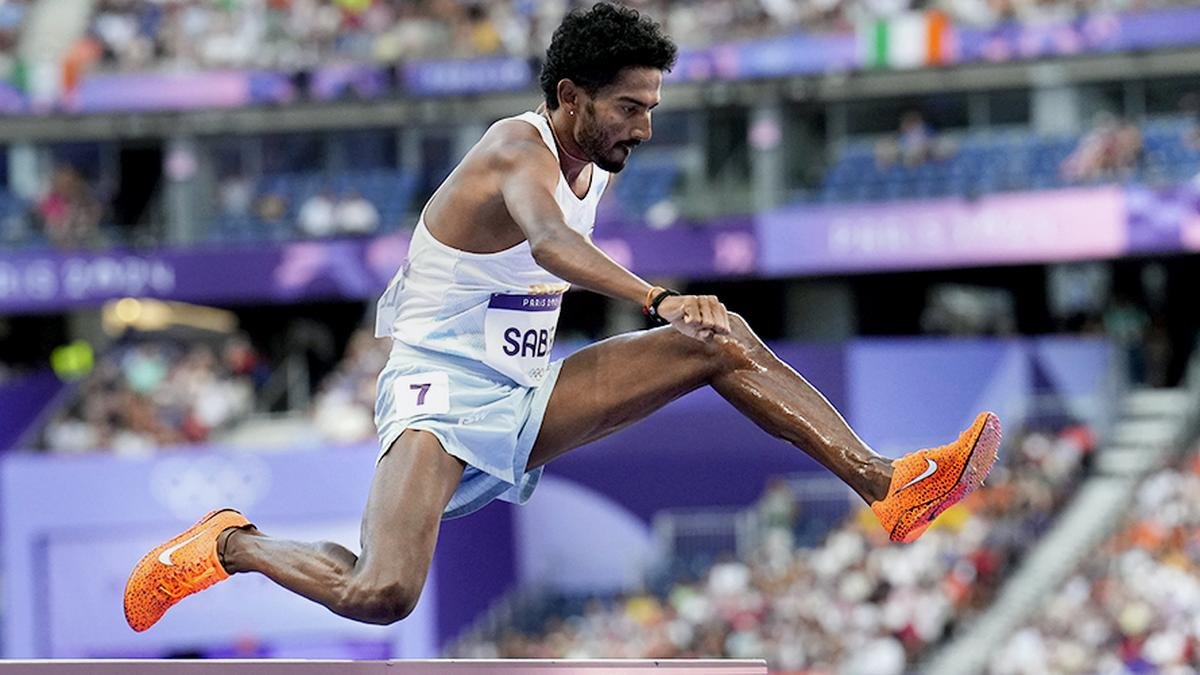The 33rd edition of the Summer Olympics is officially scheduled to get underway from July 26 in Paris. The event, which will also be hosted across 16 other cities in France, concludes on August 11.
Artistic Gymnastics run from July 27 to August 5, while Rhythmic Gymnastics is scheduled for August 8-10.
The Porte de la Chapelle Arena and Bercy Arena will host the gymnastics events.
Here are the top five male Olympic gymnasts of all time –
Nikolai Andrianov (Soviet Union)
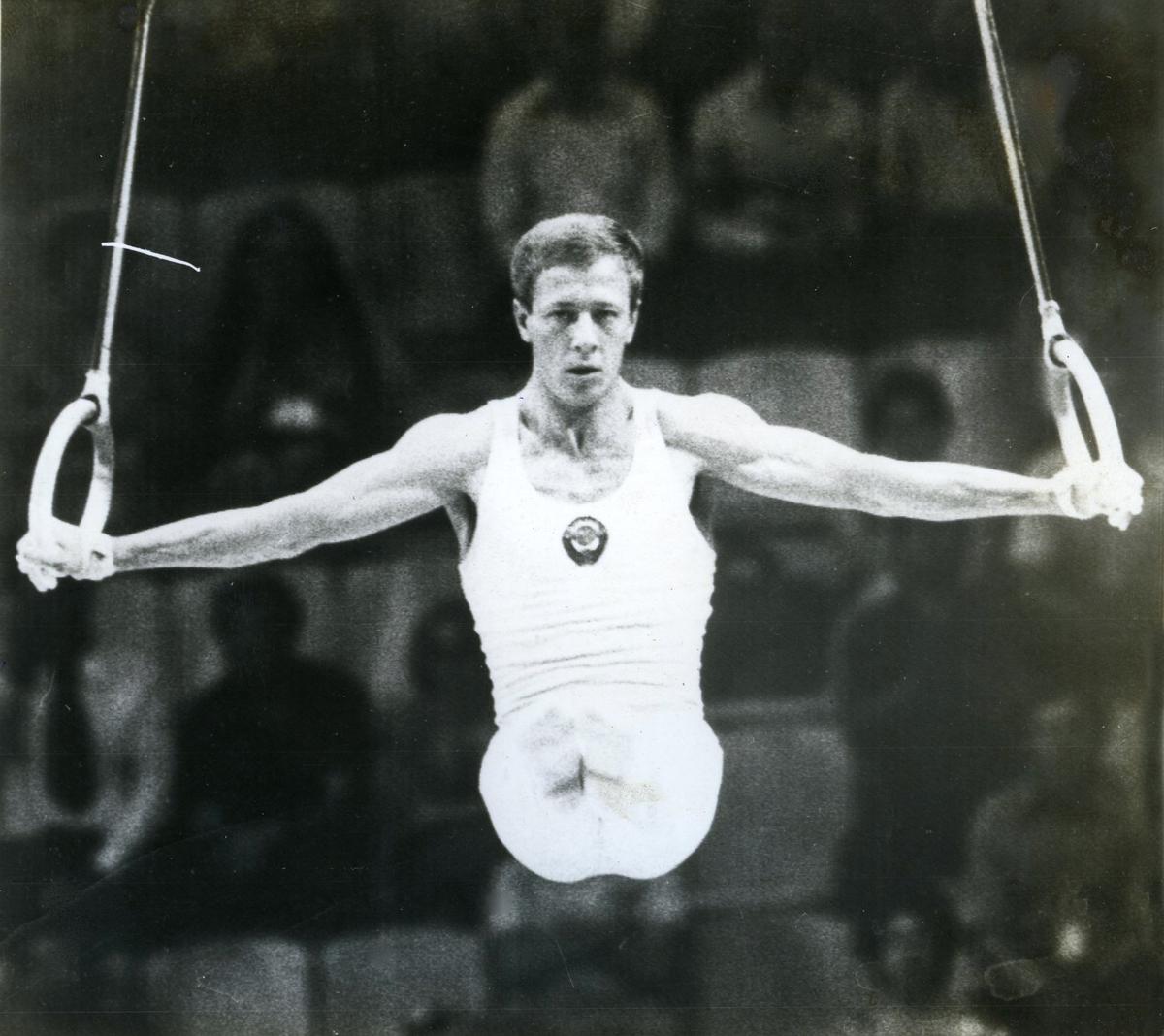
Nikolai Andrianov of the Soviet Union in action at the Moscow Olympics 1980.
| Photo Credit:
THE HINDU ARCHIVES
Nikolai Andrianov of the Soviet Union in action at the Moscow Olympics 1980.
| Photo Credit:
THE HINDU ARCHIVES
Perhaps one of the finest male gymnasts of all time, Nikolai Andrianov has the most medals to his name in gymnastics events at the Olympics. The Russian made his Olympic debut at the 1972 Munich Games. There, he won his maiden gold medal (floor exercise event), a silver in the team all-around event, and a bronze in the horse vault category.
However, it was the 1976 Montreal Games where Andrianov seemed to be at his best. He defended his floor exercise gold and won three more gold, two silver, and a bronze medal in Montreal. In the games, apart from floor exercise, Andrianov also emerged as the champion in the events including individual all-around, horse vault, and rings. He won a medal in every event that he competed in, except the horizontal bar event.
In his third and last Olympic appearance, at the 1980 Moscow Games, Andrianov defended his horse vault gold and also assisted his Soviet team to win a gold in the team all-around event, while winning two silver and a bronze medal individually. Andrianov’s bronze in the horizontal bar event remains his maiden success in the event at the Olympics.
Besides, Andrianov was also the still rings champion at the World Championships between 1974 and 1978. Overall, during his Championships career, Andrianov won four gold and nine silver medals. While at the European Championships, Andrianov managed to bag nine gold, six silver, and two bronze medals while competing in merely three editions of the tournament.
Andrianov retired in 1980 but continued to serve the sport as a coach of the USSR national junior team for 12 years. One of his students was Vitaly Scherbo of Belarus, who went on to win 10 Olympic medals. Later, Andrianov also coached the Japanese men’s team that won the team all-around gold at the 2004 Athens Games. Before breathing his last, Andrianov used to train gymnasts at a gymnastics school in Russia, where he himself used to train.
Boris Shakhlin (Soviet Union)
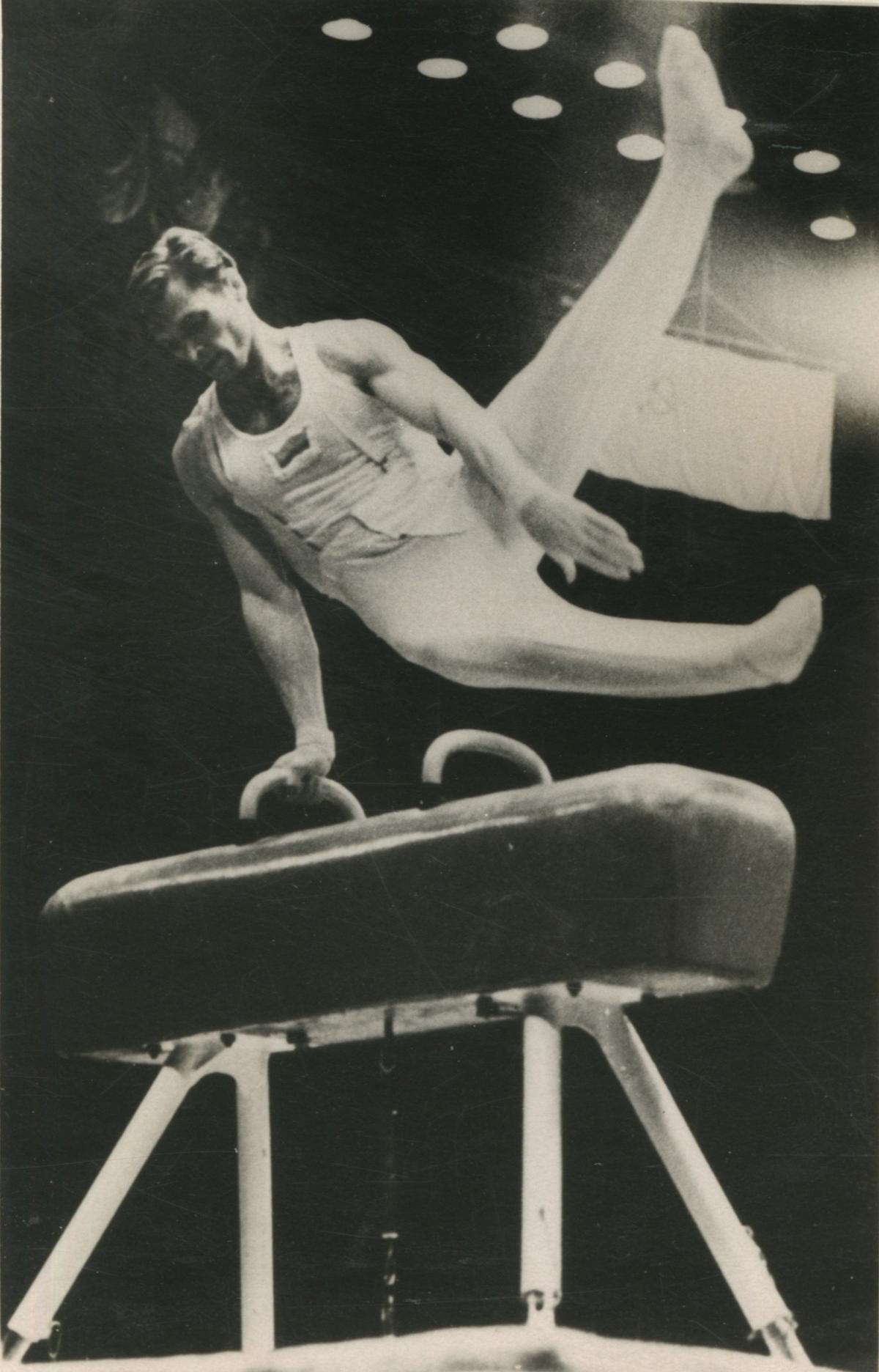
Soviet gymnast Boris Shakhlin in action.
| Photo Credit:
THE HINDU ARCHIVES
Soviet gymnast Boris Shakhlin in action.
| Photo Credit:
THE HINDU ARCHIVES
Boris Shakhlin of the Soviet Union won 13 Olympic medals (joint-second most) while competing in three editions of the Games. Shakhlin bagged seven individual gold medals, the most by a male gymnast at the Olympics.
Shakhlin made his Olympic debut at the 1956 Melbourne Games. He won a gold medal in the pommel horse event and also helped his Soviet teammates clinch a gold medal in the team all-around event.
At the 1960 Rome Olympics, though, Shakhlin dominated the gymnastics medal tally, as the Russian won a medal in every event that he participated in. Shakhlin defended his pommel horse gold and won three more (individual all-around, parallel bars, and horse vault). He also won two silver and a bronze medal during that edition of the Games.
In his third and final Olympic appearance at the 1964 Tokyo Games, Shakhlin finished as a horizontal bar champion while winning a silver and a bronze along the way.
Apart from the Olympics, Shakhlin also competed in a few World Championships editions and bagged 14 medals overall. At the Moscow 1958 Championships, Shakhlin won four individual gold medals in the events, namely, all-around, horizontal bar, parallel bars, and pommel horse.
Shakhlin had to retire from the sport after suffering a heart attack at the age of 35. In 1968, he joined the FIG Men’s Technical Committee and kept working until the 1990s, when he started to work as a lecturer in Kyiv, Ukraine.
Shakhlin received the Order of Lenin, the highest civilian award in the Soviet Union, in 1960 and was inducted into the International Gymnastics Hall of Fame in 2002 for his overall achievements.
Takashi Ono (Japan)
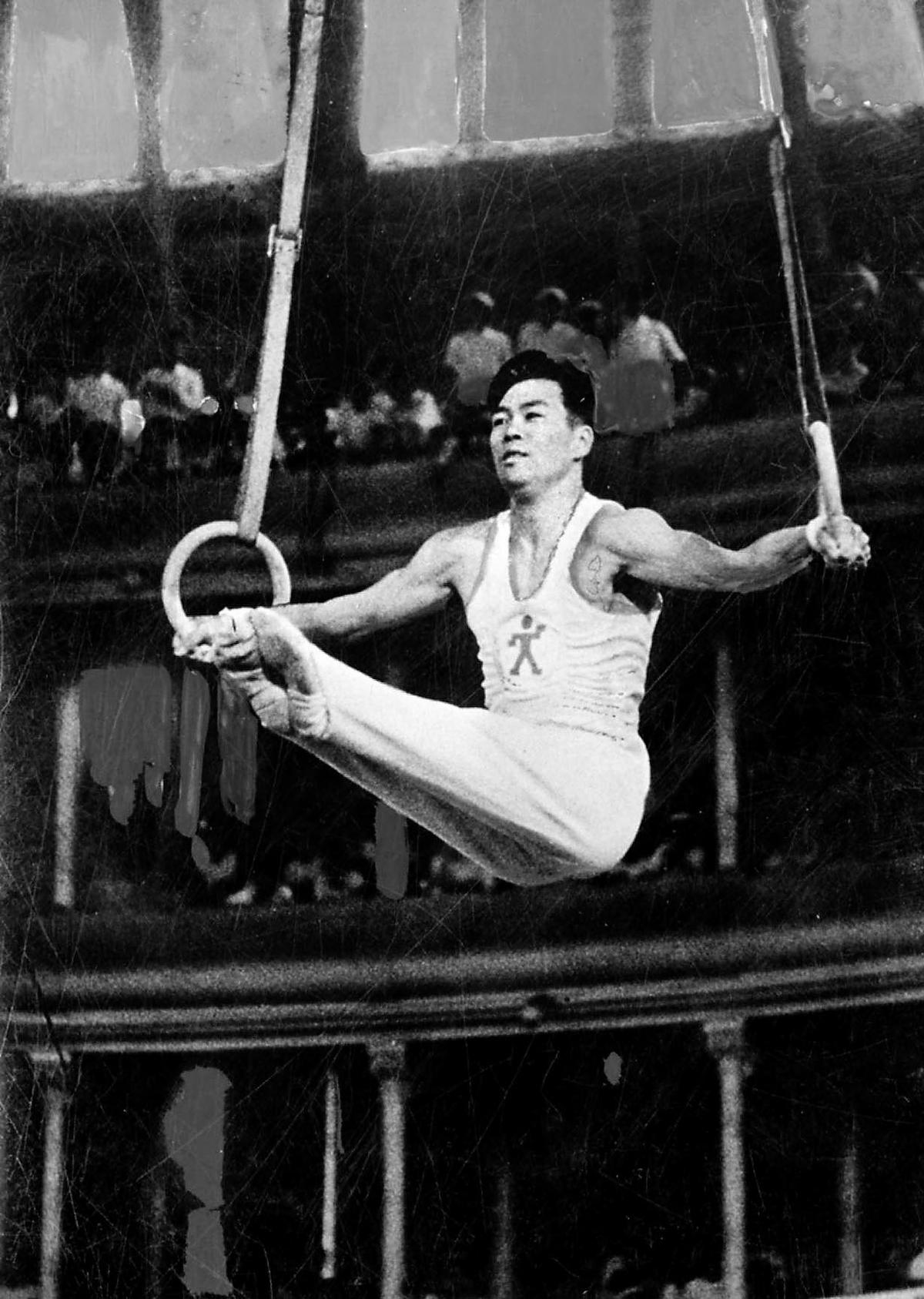
Takashi Ono in action.
| Photo Credit:
THE HINDU ARCHIVES
Takashi Ono in action.
| Photo Credit:
THE HINDU ARCHIVES
Competing in the era of Soviet dominance in gymnastics, Takashi Ono managed to win 13 medals across his Olympic career, joint-second most. Ono’s first Olympic assignment was at the 1952 Helsinki Games, where he won an individual bronze in the horse vault event.
Ono bettered his performance at the 1956 Melbourne Games as the Japanese won his maiden Olympic gold in the horizontal bar event. He also bagged three silver and a bronze medal in the same edition.
At the 1960 Rome Games, Ono defended his horizontal bar gold and won two more golds in the team all-around and horse vault events. In the same tournament, the gymnast also won two bronze medals and a silver medal. Moreover, Ono was the flagbearer of Japan in Rome that year.
In his final Olympic appearance, Ono, the oldest member of the Japanese all-around team, helped his side win gold at the age of 33. It was also Ono’s fifth gold medal. He left the sport as the most successful Japanese gymnast.
For his exceptional skills and contribution to the sport, Ono was inducted into the International Gymnastics Hall of Fame in 1998.
Sawao Kato (Japan)
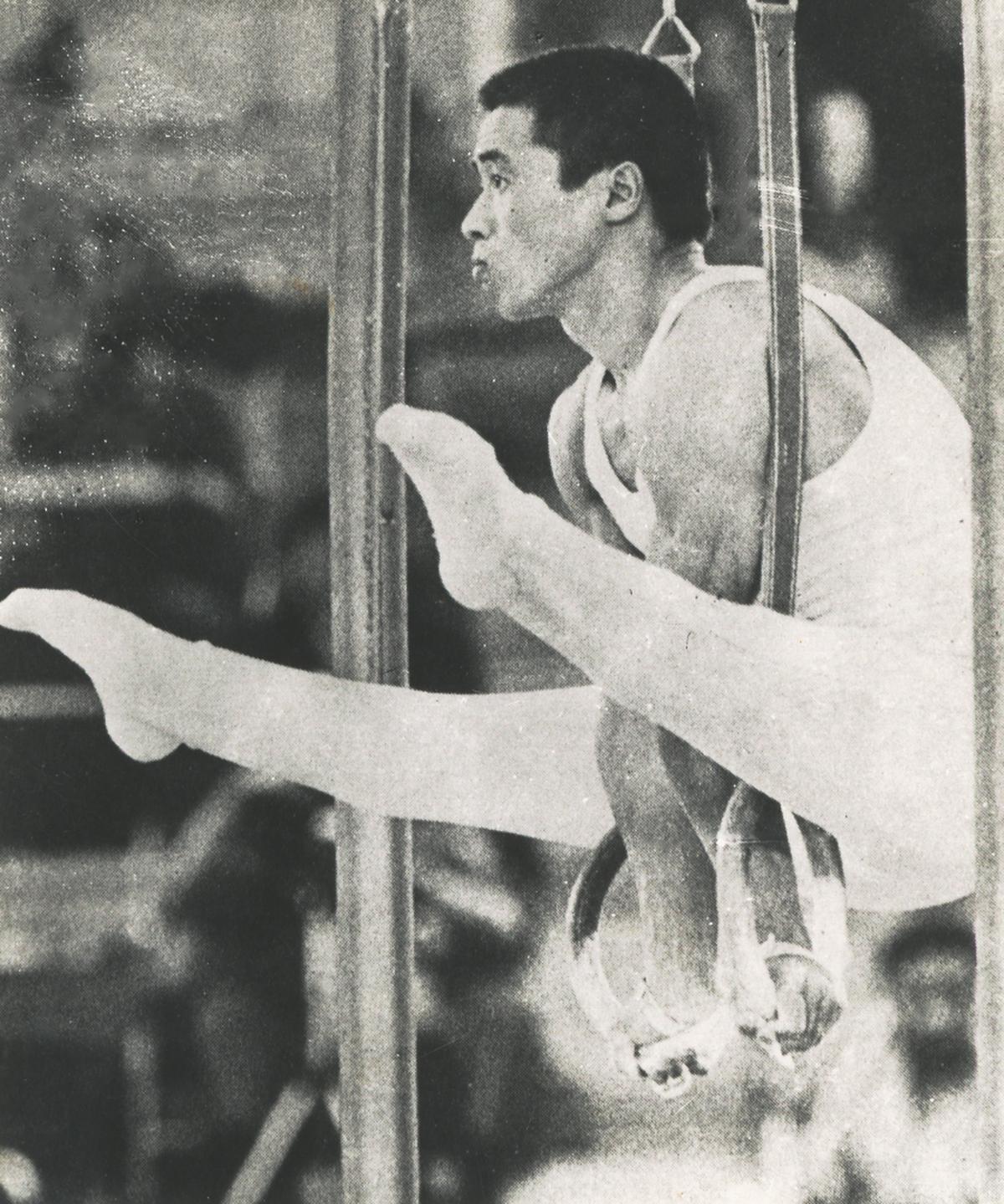
Sawao Kato, who won the gold medal in the gymnastics events in the Mexico Olympics.
| Photo Credit:
THE HINDU ARCHIVES
Sawao Kato, who won the gold medal in the gymnastics events in the Mexico Olympics.
| Photo Credit:
THE HINDU ARCHIVES
Sawao Katō represented Japan at three Olympics between 1968 and 1976 and was the face of the country when it challenged the Soviet Union’s dominance in gymnastics at the Olympics in the 1970s. He also has the most gold medals (eight, team or individual) among the male gymnasts in the history of the Olympics.
Katō made his Olympic debut at the 1968 Mexico City Games, where he won two individual gold medals, one in the all-around and the other in the floor exercise event. The Japanese also helped his team win a gold in the all-around event while also clinching an individual bronze in rings.
At the 1972 Munich Games, Katō won two gold and two silver medals, all in individual events while he and his team defended their all-around gold against the Soviet Union.
At the 1976 Montreal Games, Katō defended his parallel bars gold and also bagged a silver medal in the individual all-around event. More importantly, the Japanese all-around team, which also featured Katō then, bettered the Soviet Union again as it won its third consecutive gold medal in the event at the Olympics.
Katō retired from the sport at the age of 29. He later became a professor at Tsukuba University in Tokyo, where he had completed his studies. Katō was also the vice president of the Technical Commission of the International Gymnastics Federation for a while. He was inducted into the International Gymnastics Hall of Fame in 2001.
Alexei Nemov (Russia)
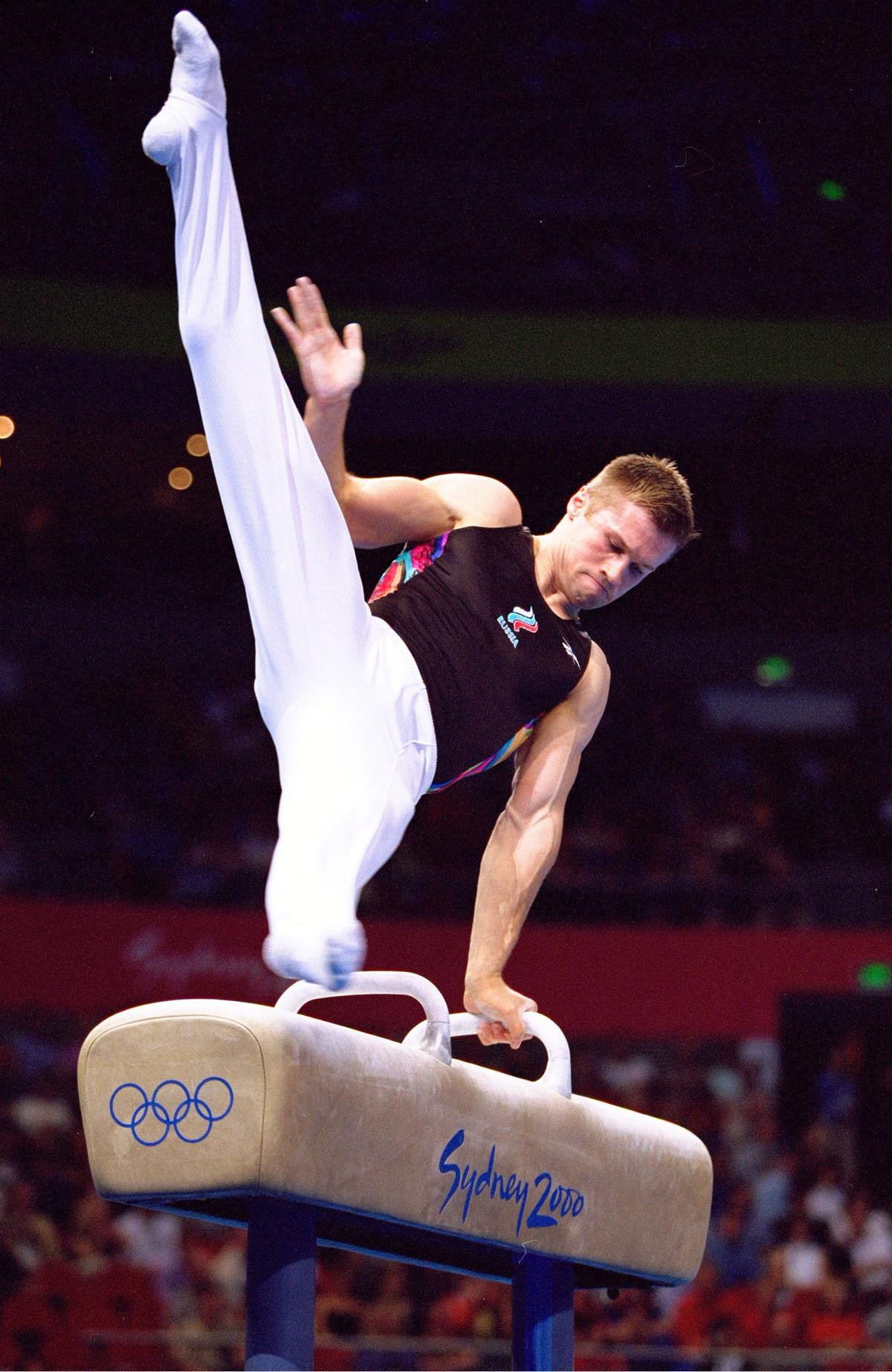
Alexei Nemov in action on the Pommel Horse in the Men’s Individual All-Around Final at the Sydney Superdome on Day Five of the Sydney 2000 Olympic Games.
| Photo Credit:
Getty Images
Alexei Nemov in action on the Pommel Horse in the Men’s Individual All-Around Final at the Sydney Superdome on Day Five of the Sydney 2000 Olympic Games.
| Photo Credit:
Getty Images
Alexei Nemov, another successful Russian gymnast, has 12 Olympics medals to his name. Born in 1976, Nemov made his Olympics debut at the 1996 Atlanta Olympics, where he managed to win an individual gold in the horse vault and helped his team win the team all-around event. Nemov also won a silver and three bronze medals in that edition of the games.
Further, at the 2000 Sydney Games, despite several injuries, Nemov won two individual golds, one in the horizontal bar and the other in the all-around event. He also clinched a silver and three bronze medals.
At the 2004 Athens Olympics, though, Nemov couldn’t win a medal. His best came in the horizontal bar event, where he finished in fifth place. The same Olympic edition also put Nemov in the middle of a judging controversy. However, in the following year, he was awarded a Fair Play Award in 2005 by the International Fair Play Committee.
Apart from the Olympics, Nemov bagged five gold, four silver, and four bronze medals during his World Championships career between 1994 and 2003. Meanwhile, at the European Championships, Nemov won three golds and a bronze across the three editions of the tournament. He also helped the Russian team win a couple of gold medals at the European Team Championships in 1999 and 2003. The most successful gymnast after the Soviet Union’s dissolution, Nemov, was inducted into the International Gymnastics Hall of Fame in 2017.



